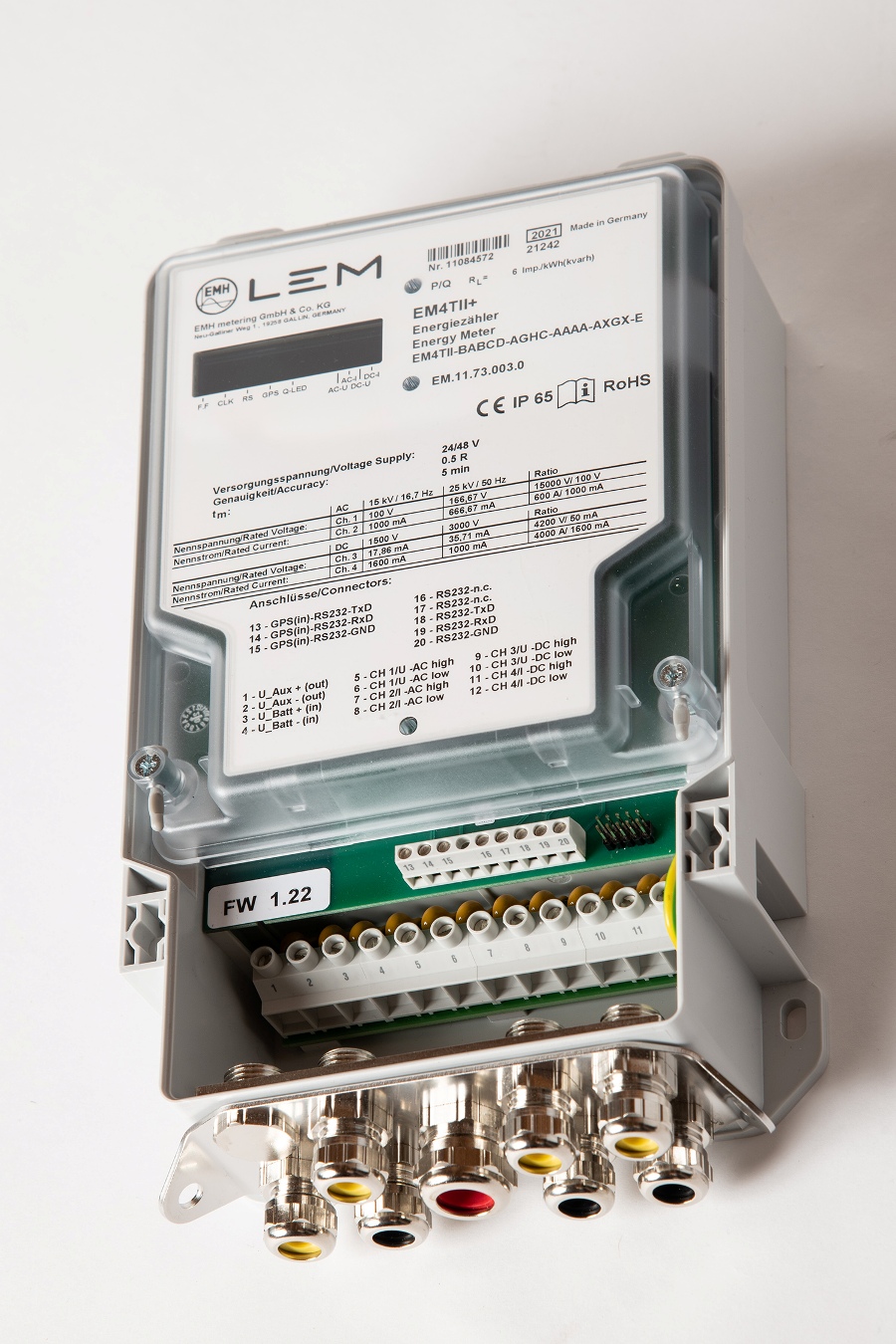On-board train energy metering system combines energy monitoring and communication in a single package with 4G connectivity and GPS service
LEM has launched TEMA4G, its first plug-and-play system for on-board train energy metering to facilitate improved energy monitoring and management in railway applications, which normally involves an on-board energy measurement system (EMS) and ground-based data collecting system (DCS).
These systems allow railway operating companies to manage energy cost for each train based on real, precise and controlled measurement under the regulation (EU) 2018/868 in Europe. By offering the TEMA4G on-board energy metering system, LEM supports the evolution of railway networks and meets the demand for management and optimisation of energy costs in railway transport applications.
Capable of operating in a wide temperature range from -40°C to +85°C, and compliant with EN 50463:2017, TEMA4G enables the measurement and transmission of energy billing data (CEBD) – timestamped and localised – to ground data collection systems.
Meeting every vibration, shock, fire protection and electromagnetic compatibility railway standard, TEMA4G can be used for new projects such as large retrofit programmes and supports railway operating companies of all sizes in a transition towards better energy monitoring, management and optimisation.
Demanding Applications
Specifically designed for such demanding railway applications, TEMA4G combines LEM’s EM4TII+ on-board energy meter, which is already in service and proven in many trains, with an industrial modem offering 4G and GPS connectivity. Through its web interface the system allows users to access detailed load profiles, as well as numerous system parameters.
Suitable for use in multi-system AC or DC vehicles, TEMA4G interfaces and processes measurement signals from current and voltage sensors and generates energy measurement and associated load profiles. Profiles are recorded in datasets with a five-minute interval (different intervals available in the product’s settings), containing the date, time, any events, as well as location co-ordinates. The measured energy datasets are stored in the instrument in consumption profiles for 300 days. TEMA4G’s state-of-the-art analogue-to-digital converters provide ultra-precise energy measurement (class 0.5 R) and guarantee excellent long-term stability, in any in-field conditions.
The TEMA4G has been positioned to take advantage of the switch over to new telecommunications networks. Its communication functions make it possible to transition smoothly and efficiently in favour of 4G networks after 2G networks have been phased out.
Ensuring maximum versatility, and adapted to the specificities of railway applications, the additional functions of TEMA4G include four input channels offering multiple configurations via the unit’s Ethernet port and data exchange security. This versatility makes it possible to adapt the product to each train, and to the needs of each project.
According to Florent Balboni, LEM Global Product Manager for energy metering systems, TEMA4G is the answer to the growing need for better energy management and optimisation in the rail transport sector. Given the importance of improving the efficiency of electrical systems, innovative systems must be developed.
“LEM has once again demonstrated its ability to meet the challenges of energy management in the railway sector by developing a turnkey energy metering system on-board trains. The development of the TEMA4G has been made possible due to our broad and long experience in on-board train sensors and complex systems using embedded software,” he concludes.
Building on its existing portfolio of innovative, high-quality products for measuring electrical parameters, LEM is continuing to invest strongly in the rail and traction sector.
- UK manufacturing steps up to COVID-19 crisis - April 2, 2020
- Clustering Innovation - March 12, 2020
- A Global Monitor - March 6, 2020

